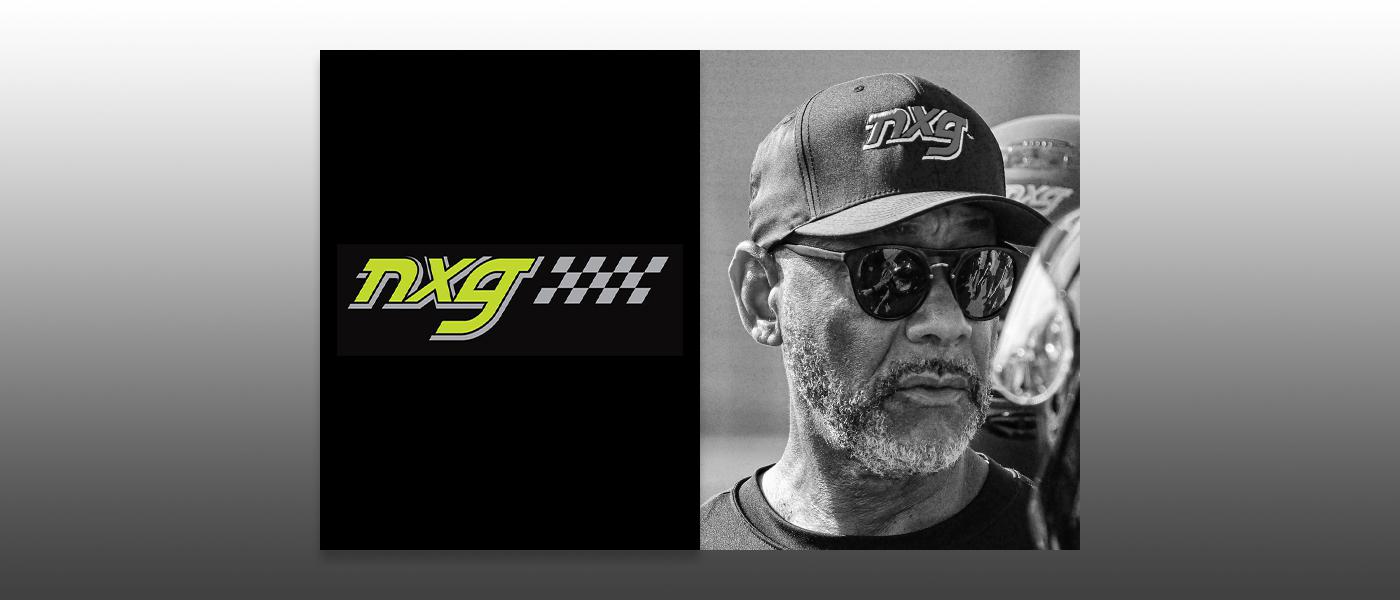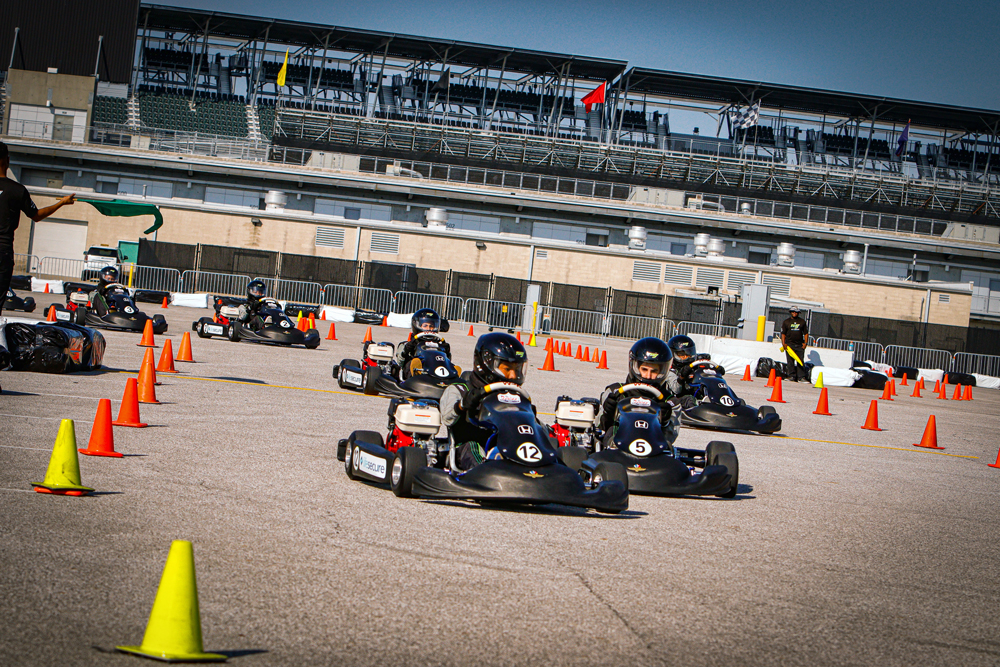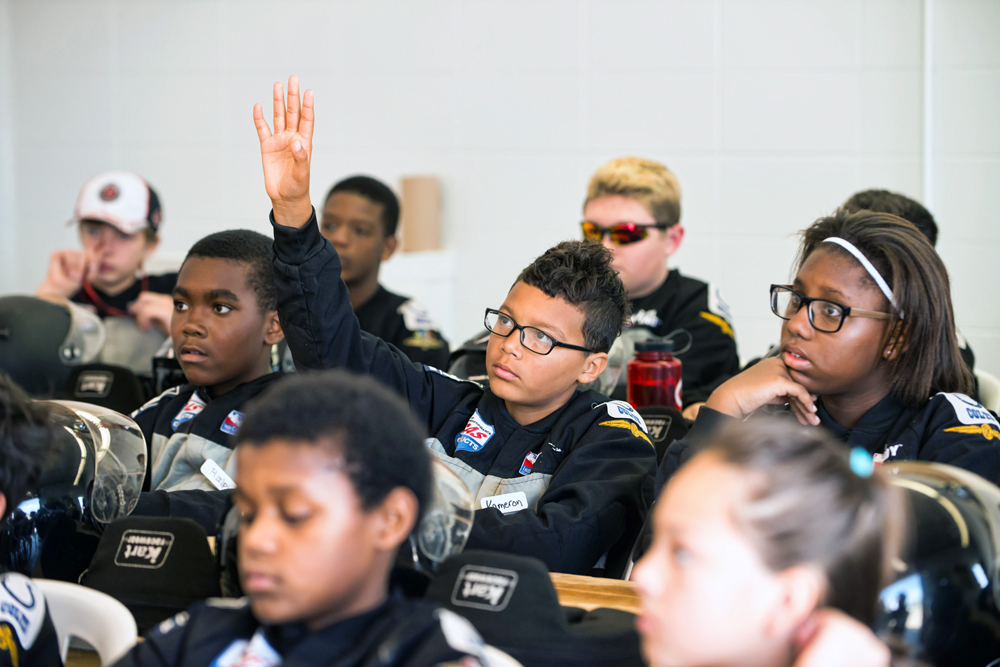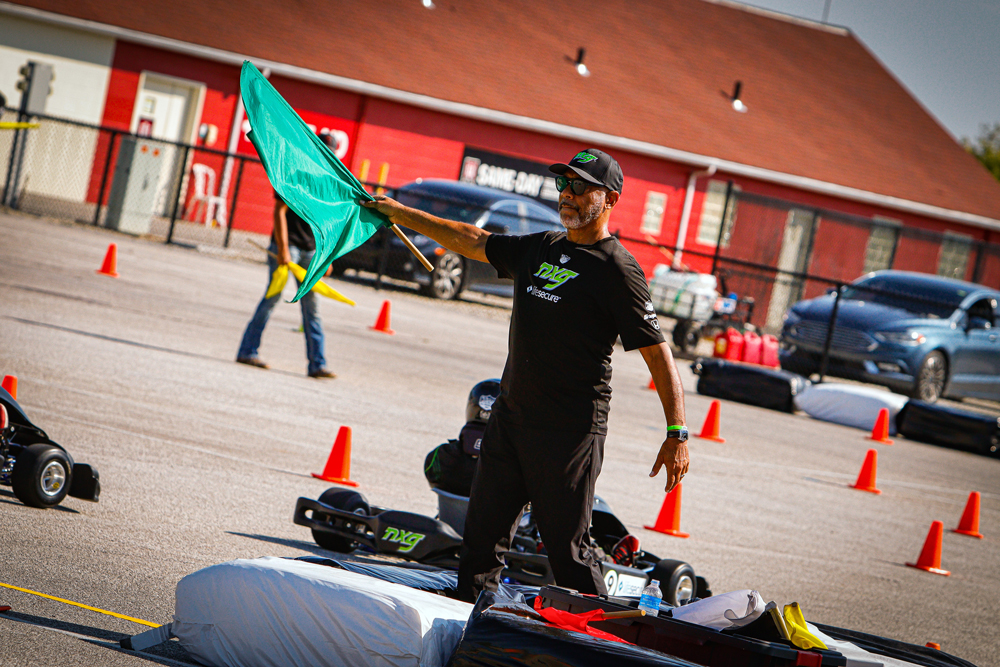Industry Insights: Rod Reid

This longtime team manager and businessman is investing in the future of motorsports through his NXG Youth Motorsports Academy, which removes barriers to the sport, especially for children of color, and teaches them valuable life skills including STEM education, mechanics, and leadership training.
Ask any racing professional about the future of motorsports and they’ll talk about the challenge of getting young people involved. It’s not just the cost of a vehicle and equipment; there’s a considerable investment in experience required to fully participate in any facet of racing. The barriers to entry into the sport are even higher for young people of limited means.
Rod Reid of Indianapolis, Indiana, has a program to bring young racers around those barriers, and to give them a solid grounding in the complete picture of motorsports. Reid’s Nexgeneracers (NXG) Youth Motorsports Academy takes primarily kids of color from the Indianapolis area and delivers a rigorous curriculum including mechanics, racing skills, finance, and STEM (science, technology, engineering, and math) proficiency, covering the whole sport of racing.
Reid didn’t come to NXG without experience of his own. After a successful business career, he was a team manager in Formula Ford and Super Vee starting in the late 1970s. In 2021, Reid’s Force Indy team entered the USF2000 series, where it earned a trip to victory lane; this year, the team jumps to Indy Lights.
PRI: Your program is all about helping kids get into racing, but how did you get into motorsports?
Reid: I was not at all aware of motorsports as a youngster, until my family moved to Indianapolis. My family wasn’t really into it, but for some reason I just gravitated toward it, maybe since I liked cars. When I was 17, I wanted to go to the 500, so I became a yellow shirt volunteer. I worked the night before the race, and then that morning I was off. That was my first 500, peering over the fence because I didn’t have a seat. I thought it was the greatest thing in the world!
Then I went on to Purdue University, where I studied engineering and then worked for an engineering firm. I started going to the 500 at that time as a fan. I didn’t get involved beyond that until I started my own business doing advertising and branding.
PRI: What pulled you into active participation?
Reid: I was doing some advertising work with a home fuel oil company. There was a young man who approached the owner of the company about sponsorship in racing. His name was Charles Wilson. Because we handled the advertising for the company, the owner sent him to us. I met this young man, and we went through his portfolio and his request for sponsorship. It didn’t fit for that company, but I told Charles, “I’m interested in what you’re doing. I think I can help you raise money.” That’s how I got started, doing sponsorships for Charles Wilson. We raised a few bucks, and eventually got to the point where we became best friends.”

PRI: How did this lead to Nexgeneracers?
Reid: I was there when Willy T. Ribbs came to the Indy 500 in 1991. I was thinking the tide had turned, and we were going to start seeing other African-American folks come into the sport. But here we are 30 years later, and there’s only been one other African-American, George Mack, to run the 500. That’s really, really sad. Charles and I thought, if we’re going to have African-Americans in motorsports, they have to start when they’re young. Whether it’s drivers, mechanics, what have you. That’s how we started.
PRI: What was the biggest challenge to getting started?
Reid: We realized, very quickly, something that I preach today: There is a major cultural divide. Even if they don’t play basketball, the average Black kid knows what it is. They understand it. In our communities, we have no clue what racing is. Even those who may go to a concession center and run a go-kart, they don’t understand what this is all about. They just jump in and go, “Wow. This is racing. This is fun.” They don’t understand the business side, or even the sports side, from a competitive perspective.
We decided that the best way to teach kids about motorsports would be to start with go-karts. It took us from 2000 to 2006 to start the program. We used our own money, of course. We held our first class in September of 2006 with kids from local schools and community groups.
PRI: How has the program grown since 2006?
Reid: We are celebrating 16 years, and more than 2,400 kids have come through the program. We quickly found out that we could use this motorsports platform as a way to teach kids some things that were much more sustainable in the long run, like STEM education and life skills. Our early curriculum would have been very similar to a Skip Barber Racing School: “Let’s get you in there, teach you all about the track and how to drive, and race.” We morphed very quickly to, “Let’s talk more about math and science, and geometry related to racing. Let’s talk about health and nutrition of a race car driver. Let’s talk about taking care of equipment.” Those are life skills that can be used way beyond racing.

PRI: The program is designed around African-American kids, but can anyone attend?
Reid: Obviously I target the African-American community, but we’re open to anyone. We probably have about 4% or 5% non-Black kids. I get a lot of the white parents who say, “I really want a program like this for my kid because he’s been running go-karts since he was five, but he doesn’t know how to drive. Can you teach him how to road race?” Yes, I can, but that’s not my objective. My objective is to not teach your son or daughter how to road race. It’s really teaching them some life skills that they can take away. I want the kid who has never been in a go-kart before.”
PRI: Driving is great, but even talented drivers rarely reach the big time. I’m interested in the part where we teach kids about all the other opportunities in racing.
Reid: I say, keep the dream. If your A-plan is to be a race car driver, I’m not discouraging you. I’m just saying, look at the reality. Does your family have the funds for you to do it, even at a go-kart level? There are kids spending $60,000 or $70,000 a year for go-karting. Our families don’t have that kind of money. I tell the kids, you can become someone who maybe learns technology, can be in timing and scoring, or maybe work in the office at a motorsports organization like IMS [Indianapolis Motor Speedway]. Then, if you get some money and you want to spend it in racing, see what happens.
PRI: How can a kid grow in racing through your program?
Reid: What motivates me is that possibility of bringing a young person into the sport and seeing them flourish. Right now, we have three programs. We have the Academy, which is introductory. Then, I have our own little race series, the Grand Prix series. Those kids who graduate from the Academy, usually they do 10 events in a season. They race for points, and we crown a champion, but the highest trophy goes to our Driver of the Year. The Driver of the Year is a person who has worked hard, on and off the track. Now we have a new program called Path-to-Pro. That is where we help our graduates find internships.

PRI: There’s no set fee to put a kid into your NXG Youth Motorsports Academy. How do you fund all the costs to be able to offer that curriculum to a kid whose family can’t pay for it?
Reid: We have been really blessed with some really strong sponsorship. I’ve got to give a real big shout out to Lucas Oil. We met Forrest Lucas back in 2005. He really liked the idea that we were doing good things for kids. He has been our greatest benefactor. He has provided funds for us since 2006. All 15 years, he’s been our predominant sponsor. That in turn allowed us to get sponsorship with Honda, that we’ve enjoyed now every year. Honda has been our second-longest-running sponsor, providing us motors for the go-karts. We have anonymous people who will send us $1,000 gifts. I also include IMS and IndyCar. They don’t give us cash, but they allow us to be on-site and provide us a lot of support there.
PRI: If you had all the money you needed, what would Nexgeneracers be doing?
Reid: When we started, I wrote down our vision. Our vision was to be a national program that we would have in Indianapolis, Detroit, St. Louis, Dallas, St. Pete, Portland, LA, or any place that has an urban environment. Last year we introduced our first city outside of Indianapolis, and that was Detroit. We did two events there, and it was extremely well received. We’re going to do four events this year, and we’re going to keep increasing until we can actually have a similar program to Indianapolis, a nine-month program, in Detroit. I’m looking at St. Louis, looking at Dallas, any place that I can get local support. That’s my vision to have NXG Youth Motorsports across the country.
PRI: How can different motorsports stakeholders engage kids in motorsports?
Reid: One word: Education. When I say education, I’m not necessarily talking about formal; I’m just talking about being informed. If a young person doesn’t know that this industry exists as an opportunity, whether it’s an opportunity to be a fan, or an opportunity to work in the pit crew, there’s no way they will engage. I use this scenario: In school, as a part of exercise, they’ll probably pull out a basketball. Those kids could be five years old. Well, I don’t have a go-kart to pull out, and I can’t go to the corner and run it.
My idea is, you may not be able to run a go-kart on the school parking lot, but you can start with RC cars. If you take a little RC car and say, “Let’s take it apart. Let’s put it back together. Then we’re going to go race it.” Look at what’s happening. You’re teaching motor skills, dexterity, teaching me about a sport. You can teach that, just like you teach basketball.
PRI: It’s a tall order to keep a bunch of kids focused and understanding what’s going on. What are the keys to good leadership, and what makes a good leader and role model for these kids?
Reid: This sounds really cliche, but you have to love kids. My experience has been, the average person who is a backyard mechanic and works on cars, they aren’t necessarily the same person that wants to go out and play with kids. I say play because that’s, in essence, what you really are doing. You’re teaching, but you’re playing with them. There are two reasons why kids want to work with us. First, they want to drive the go-karts, and then they want to hang out and tinker on them. The same thing that lures a kid to want to come into the program, the go-kart, is the same thing that lures adults. Then the adults realize that a lot of this is sitting around. You’ve got to be comfortable sitting there mentoring a kid, talking to them, providing discipline and information to them. It’s not glamorous at all.
PRI: What’s the most important learning that your kids take back to their communities?
Reid: I think it’s discipline and respect. We have a little thing that I wrote when I first started the program. The acronym for kart, K-A-R-T, stands for knowledge, awareness, respect, and thinking. Racing is a thinking person’s sport. I put that up on the board and we say it in the first class. That’s our mantra.
When they leave us, most kids will say, “Gosh, Coach Reid’s really disciplined.” They have to walk in a straight line, they all have a uniform on. Think about it: A kid is 12 years old and hasn’t walked in a line since kindergarten. We start that way, because I said, this is how you’re going to drive. I need you to drive in a line because I’m going to teach you the line.
We use that discipline piece, and then I tell them to respect each other. You can’t race against each other unless you respect each other. Otherwise, you’ll just run over someone. That gives them good leadership skills. Being disciplined, being organized, and being respectful of everybody. That’s going to make a good leader, in my opinion.
PRI: How can the motorsports industry in general be more welcoming to people of color?
Reid: Some don’t want to hear it, but I can tell you. First of all, they need to know history. There are people who feel we don’t belong there, and that the only reason we’re there is because somebody was sympathetic. But we have been involved with racing since the very beginning. Jack Johnson, who was a famous boxer, bought a Thomas Flyer and challenged Barney Oldfield to a race. Nobody knows that. They don’t realize that there was Rajo Jack, Charlie Wiggins, Red Oliver, or Wendell Scott. They don’t realize that the Colored Speedway Association existed. Back to your question, I think knowing that it’s not an anomaly for Blacks to like racing, and to want to be engaged in it. It starts there. Racism is based on ignorance. People look at me and they say, “You got the attention of Roger Penske. It’s because of George Floyd.” I said, “Absolutely, it’s because of George Floyd.” I hate to say it, but because he was murdered, it became optical for Black folk. All of a sudden, we could be seen. You wouldn’t believe how many calls I got from people in and around motorsports after Floyd got killed. It’s because there was that empathy. Now, that’s going to go away; I’m realistic about it. People look at this and they think that this whole thing, diversity, equality, and inclusion, is just the flavor of the month. Don’t make it the flavor of the month.
PRI: All racers have heroes and role models. Who are yours?
Reid: I don’t know that I have a major hero. I think, for me, it’s those people who worked hard, but are unrecognized. For example, the Tuskegee Airmen who fought in World War II. I realized what those men sacrificed to do, with very little respect. My heroes are more the folks who work hard, behind the scenes. They didn’t do it for glory, they just did it because it was the right thing to do, even in the face of adversity.
 MEMBERSHIP LOGIN
MEMBERSHIP LOGIN JOIN PRI
JOIN PRI


